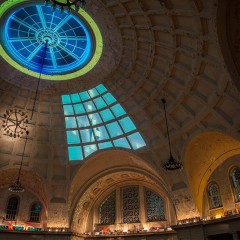Commissioned art is always a gamble, the more so when intended to illuminate the history, function and architecture of the site itself. When it works the result is more than the sum of its parts; Carolyn Healy and John Phillips’ Running True at Disston Saw Works (part of Hidden Philadelphia and open through Sunday, June 28) is an extraordinary success: an installation which multiplies the value of its constituent parts.
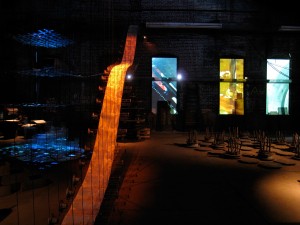
Disston Saw Works in the Tacony section of northeast Philadelphia is a mid-19th century company that was part of the industrialization of the period and it’s remarkable that it has survived, albeit in reduced form. It supplied materials for the Union army during the Civil War and armor during World War II. Healy and Phillips spent months at the site not only doing research and pouring through old mechanical drawings, ledger books and tools but initially in observing and building the trust of the workers. While the Disston workers were skeptical at first, the artists had no trouble appreciating their craftsmanship in hand-tuning each of the saws the factory produces.
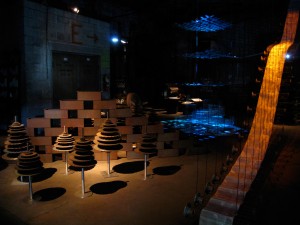
In the unused drop forge building they’ve created an installation that is an homage to the history, workers and methods employed at Disston; they created two videos: one of current machine manufacturing at the factory, the other a collage of early blueprints for machinery projected onto blueprints, and audio tape that includes ambient sound from the factory. Other than the equipment that supports the audio and video and a tall conveyor belt that bifurcates the space, most of the material in the installation came from the site.
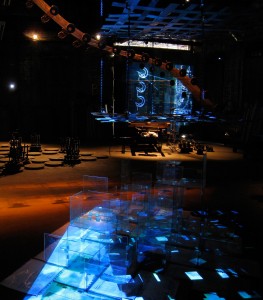
While Charlie Chaplin’s Modern Times portrayed industrial production as antagonist, Healy and Phillips have built what they acknowledge to be a temple to Vulcan, god of fire and patron of blacksmiths. Dramatic lighting throughout underlines the sense that this is a hallowed space.
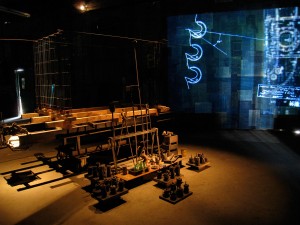
The artists re-arranged old machine parts as if they were children’s blocks (or a dis-assembled Louise Nevelson), creating groupings which allude variously to architecture, machinery and people. In one corner they’ve arranged old ledger books, one open to show the beauty of accounts hand-done in proper 19th century penmanship. In another they’ve arrayed groups of hand-tools in patterns on circular machine parts. The installation speaks of great respect for Disston’s production, history and the people involved.
And the workers and neighbors with family connections understand that; they’ve visited, and continue to contribute their stories. Disston had built a community around the factory (a paternalistic utopianism much like Ledoux’s Royal Salt Works at Arc-et-Senans), including housing, schools and a firehouse and many of the area’s current inhabitants have long ties to the company. Healy and Phillips’ installation is a visually-stunning environment and a locus for Tacony history. The artists have attracted new audiences and learned from them. How much more can art do?
My only disappointment is that the installation will only be up through June 28. Catch it while you can!


